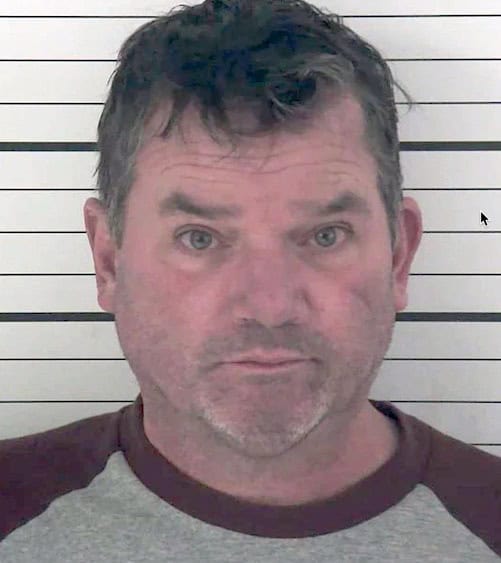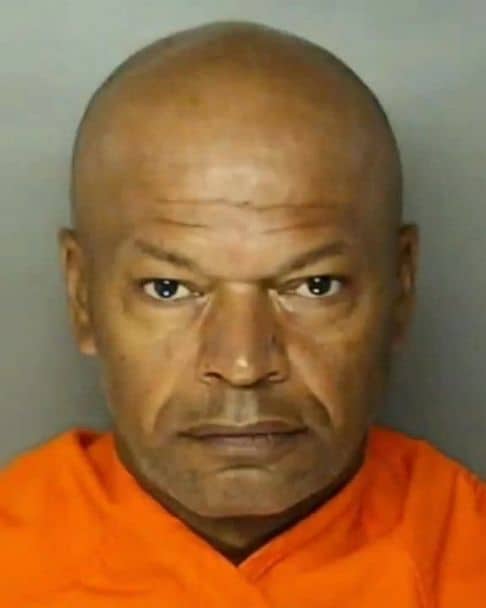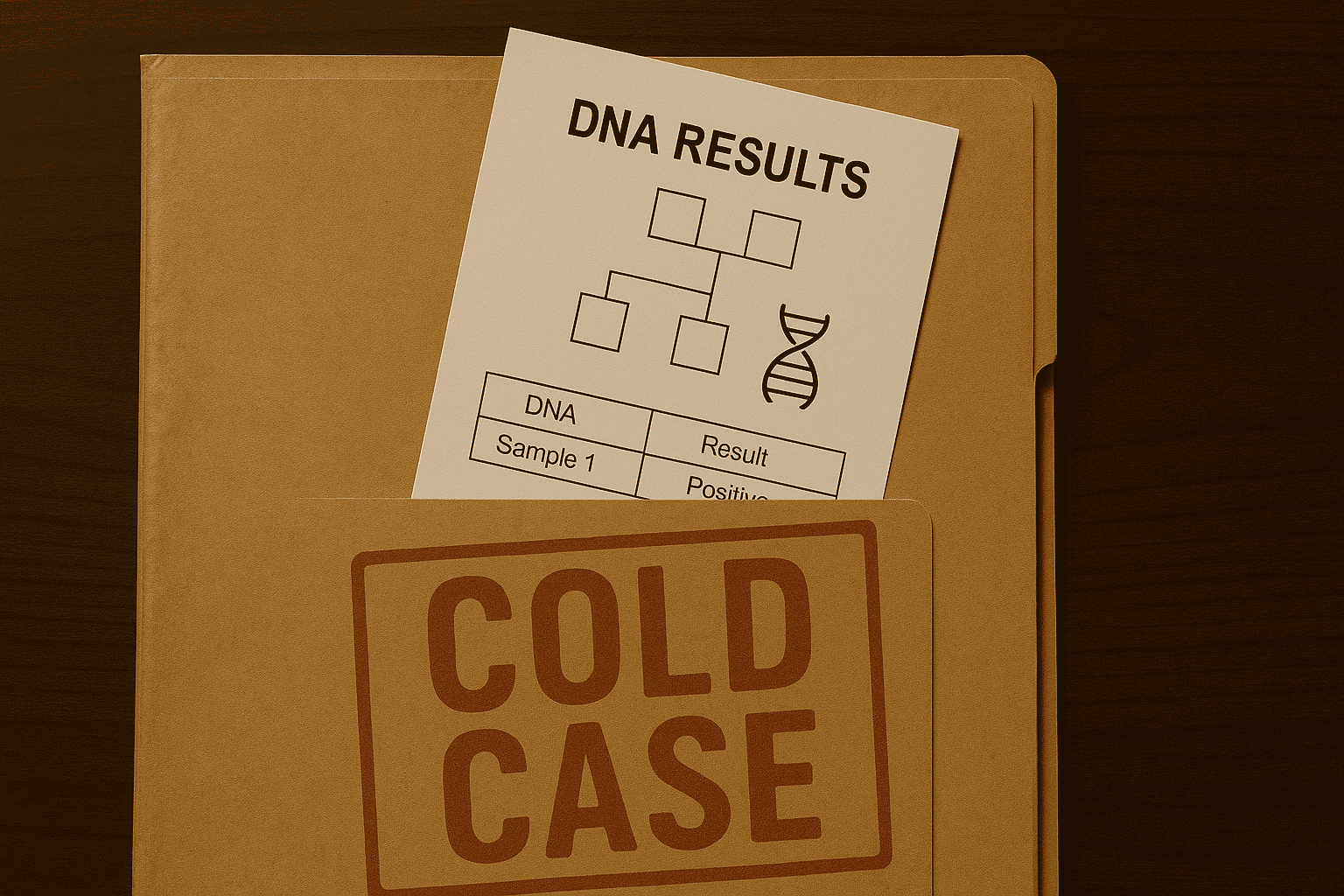Investigative genetic genealogy has revolutionized cold case investigations, helping identify perpetrators of violent crimes through DNA evidence.
These ten cases showcase how this breakthrough technology has transformed criminal justice by helping solve previously unsolvable cases.
10. The Albuquerque Serial Rapist: Edward Duran
Known victims: 8

Edward Duran, 63, was arrested in December 2021 after forensic genetic genealogy linked him to a series of eight sexual assaults in Albuquerque, New Mexico spanning from 1990 to 1997.
The breakthrough came through a federally funded initiative to clear backlogged sexual assault kits, with one victim’s kit from a 1997 home invasion assault not being tested until February 2020.
In that attack, the perpetrator broke into the victim’s apartment, assaulted her at knifepoint, and forced her to shower afterward.
Bode Laboratories conducted both the genetic genealogy investigation and laboratory work, with investigators confirming Duran’s identity through DNA collected from a fork he used at a sushi restaurant.
Disturbingly, Duran had previous sexual assault convictions from 1979 and 1991, receiving just six-month sentences for each.
Most troublingly, six of the eight linked assaults occurred while he was on probation for his 1991 conviction, demonstrating a significant failure in the justice system.
One victim noted his methodical approach, stating he “was assured, commanding, and knew every step,” suggesting a practiced predator who had refined his techniques over multiple attacks.
9. The NorCal Rapist: Roy Charles Waller
Known victims: 9

Roy Charles Waller, known as the “NorCal Rapist,” terrorized Northern California communities for 15 years from 1991 to 2006, committing a series of particularly violent home invasions targeting primarily young Asian women.
His brutal methodology involved binding victims, repeatedly assaulting them, and threatening them with deadly weapons.
The breakthrough in this cold case came in September 2018 when forensic genetic genealogy linked DNA evidence from multiple crime scenes—including the suspect’s blood from one courageous victim who managed to stab him with scissors—to Waller.
Investigators confirmed the match through DNA collected from items Waller discarded outside his home. Despite earlier “John Doe” warrants filed in 2006 to prevent the statute of limitations from expiring, justice took over a decade more to arrive.
During his 2020 trial, Waller claimed he couldn’t explain how his DNA appeared at crime scenes, but the jury deliberated just 2½ hours before convicting him on 46 counts, including 21 rape charges against nine different victims.
His sentence of 897 years in prison ensures he will never harm another person.
8. The Charlestown Assaulter: Matthew J. Nilo
Known victims: 9

Matthew J. Nilo, a 35-year-old attorney, was arrested on May 30, 2023, for a series of cold case sexual assaults that terrorized Boston’s Charlestown neighborhood between 2007 and 2008.
Initially linked to four attacks in the Terminal Street area through DNA evidence from sexual assault kits, forensic genetic genealogy later connected him to four additional victims in Boston’s North End.
The breakthrough in this case came through collaborative efforts between the Boston Police Department, New Jersey Police Department, and the FBI’s Boston office, supported by funding from a Sexual Assault Kit Initiative Grant.
Authorities arrested Nilo at his home in Weehawken, New Jersey, where he had established a professional life.
Despite pleading not guilty to the original charges in Suffolk County Superior Court in June 2023 and posting a $500,000 bail, Nilo faced mounting evidence when a grand jury indicted him for five additional sexual assaults against four more victims later that month.
His case represents one of the most recent successes of forensic genetic genealogy in bringing justice to survivors of sexual violence.
7. The Cincinnati Home Invader: William Brian Blankenship
Known victims: 9

William Brian Blankenship was arrested in February 2020 for a series of home invasion sexual assaults that occurred in Cincinnati, Ohio between 1999 and 2001.
His victims ranged from adult women to children as young as 10 years old, including a particularly disturbing case where he kidnapped a young girl from a camper in her driveway and assaulted her in a nearby field.
The breakthrough in this cold case came through advanced forensic genetic genealogy work by Barbara Rae-Venter and members of the same team that identified the Golden State Killer, with additional support from Parabon Nanolabs.
Investigators used Y-STR DNA analysis to narrow down the male lineage before obtaining a warrant for Blankenship’s DNA, which matched the crime scene evidence.
The investigation expanded when authorities in Campbell County, Kentucky discovered Blankenship’s connection to six additional victims there, including several minors.
One victim had been groomed by Blankenship for approximately two years between 1989-1991. In February 2023, Blankenship pleaded guilty to three counts of rape in Hamilton County in exchange for the dismissal of other charges in that jurisdiction.
6. The Potomac River Rapist: Giles Daniel Warrick
Known victims: 10

In November 2019, forensic genetic genealogy finally put a name to the notorious “Potomac River Rapist” when authorities arrested Giles Daniel Warrick for a series of sexual assaults that terrorized Washington D.C. and Montgomery County, Maryland throughout the 1990s.
Most significantly, Warrick was charged with the brutal 1998 rape and murder of 29-year-old Christine Mirzan, a National Academy of Sciences intern who was attacked while walking home to Georgetown University, sexually assaulted, and bludgeoned to death with a heavy rock.
The breakthrough in the case came when Parabon Nanolabs worked with Montgomery County Police Officer Steven “Smugs” Smugeresky to analyze DNA evidence that had linked seven of the nine rapes.
While Warrick maintained his innocence and a trial was scheduled for November 2022, he was found dead in his cell from an apparent suicide on November 20, 2022, bringing a complicated end to the decades-long pursuit of justice for Mirzan and the other victims.
5. The Shelbyville Home Invader: Steven Ray Hessler
Known victims: 10

Steven Ray Hessler terrorized communities in Shelbyville and Shelby County, Indiana in the early 1980s through a series of violent home invasions and sexual assaults.
His brutal methods included a particularly horrific attack where he severely beat a male victim with his gun, causing permanent brain damage and disability, before sexually assaulting the man’s wife.
Despite these crimes occurring nearly four decades ago, justice finally came through forensic genetic genealogy when Parabon Nanolabs identified Hessler as the prime suspect.
Investigators confirmed the match through DNA surreptitiously collected from Hessler’s utility bill envelope. This wasn’t Hessler’s first encounter with the law—he had previously served approximately 9 years for a 1990 rape conviction.
Following an eight-day trial in March 2022, a Shelby County jury convicted Hessler on all charges, including multiple counts of rape, unlawful deviate conduct, burglary causing bodily harm, and robbery.
On April 1, 2022, he received an extraordinary 650-year prison sentence, effectively ensuring he would never again have the opportunity to harm others.
4. The Fayetteville Serial Rapist: Johnnie B. Green Jr.
Known victims: 11

Johnnie B. Green Jr. terrorized the Fayetteville, North Carolina area between June 2009 and November 2010, committing a series of 12 brutal kidnappings and sexual assaults.
Investigators initially linked the cases through DNA evidence collected from sexual assault kits, but the case remained cold for over a decade.
The breakthrough came when Parabon Nanolabs applied forensic genetic genealogy techniques to the DNA samples, eventually identifying Green as the perpetrator.
In October 2022, Green pleaded guilty in Cumberland County Superior Court and received a sentence of 28 years and five months in prison.
During the emotional sentencing hearing, seven survivors courageously shared their stories, including one victim who was on the phone with her mother when Green broke into her home and assaulted her.
3. The Clearfield Rapist: Mark Douglas Burns
Known victims: 14

Mark Douglas Burns, dubbed the “Clearfield Rapist,” terrorized communities across Utah and Wyoming with a series of violent home invasion sexual assaults spanning from 1991 to 2001.
His crimes were particularly brutal, including one instance where he forced family members to watch as he assaulted both a mother and daughter at gunpoint.
The breakthrough in this cold case came through genetic genealogy investigation conducted by Barbara Rae-Venter, the same investigator who helped solve the Golden State Killer case.
After confirmation through discarded DNA samples, Burns was arrested in 2019 at his Ogden home, where he confessed to the assaults.
Despite statute of limitations issues with some charges, Burns was ultimately sentenced to 242 years in prison for the rapes.
Burns also confessed to multiple homicides, including the 2001 murder of Sue Ellen Gunderson Higgins, for which he received a life sentence without parole.
Disturbingly, this wasn’t Burns’ first serious conviction—he had previously served 13 years for a rape in North Carolina after having his death sentence commuted.
Investigators continue to probe his possible connection to additional unsolved crimes.
2. The Myers Park Rapist: David Edward Doran
Known victims: 15

David Edward Doran, identified through forensic genetic genealogy in 2021, was responsible for a series of 15 home invasions and sexual assaults in Charlotte, North Carolina from 1990 to 1999.
The perpetrator, who became known as the “Myers Park Rapist,” targeted primarily minors, with victims ranging from 10 to early 20s.
Operating with chilling precision, he would break into homes armed with a knife, wearing a ski mask and gloves, before taking victims to different locations for assault.
The breakthrough came when Parabon Nanolabs, funded by the Sexual Assault Kit Initiative (SAKI), analyzed DNA evidence preserved from the original crime scenes.
Doran, who died in 2008, had never previously been considered a suspect despite his criminal history as a “cat burglar” targeting upscale homes.
The Charlotte-Mecklenburg Sexual Assault Cold Case Unit, which has cleared over 400 cases since 2006, continues to investigate Doran’s potential connection to additional assaults across multiple states where he lived after leaving North Carolina.
1. The Golden State Killer: Joseph James DeAngelo Jr.
Known victims: 72

Joseph James DeAngelo Jr., a former police officer, terrorized California communities for over a decade between the 1970s and 1980s.
Known by various monikers including the East Area Rapist and Original Night Stalker, his crimes were marked by meticulous planning, home invasions, and psychological torment of his victims.
The breakthrough in this cold case came in 2018 when investigator Barbara Rae-Venter used genetic genealogy techniques to identify DeAngelo through DNA samples uploaded to GEDmatch, a public genealogy database.
This groundbreaking investigation, led by Detective Paul Holes, became the first high-profile success of forensic genetic genealogy and revolutionized cold case investigations nationwide.
In 2020, the then 74-year-old DeAngelo pleaded guilty to 13 murders and 13 kidnappings, while also admitting to dozens of rapes that couldn’t be prosecuted due to statute limitations.
He received multiple life sentences without the possibility of parole.
About Investigative Genetic Genealogy
Want to learn more about how investigative genetic genealogy works? Check out my guide here.
Source: Dowdeswell, Tracey (2023), “Forensic Genetic Genealogy Project v. 2022”, Mendeley Data, V1, doi: 10.17632/jcycgvhm96.1. This source provided the factual basis for case descriptions which I have rewritten for this article.



My DNA was used to trace a little girl who was abandoned by the Bear Brook serial killer. Thanks to my genealogy work she was identified. I am obsessed with genealogy too.